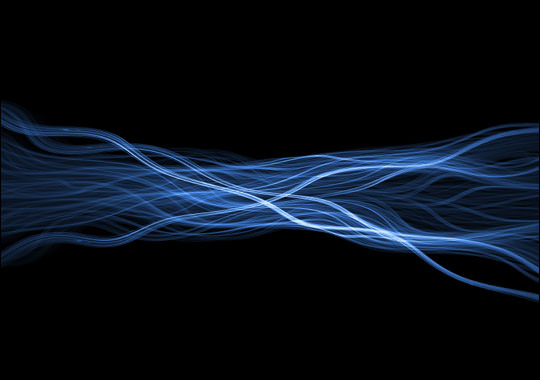We have gained so much powerful knowledge in the past few hundred years. But there’s still so much that we don’t know.
Continue reading “The Knowledge We Don’t Yet Have”Debris from DART could Hit Earth and Mars Within a Decade

On Sept. 26th, 2022, NASA’s Double Asteroids Redirect Test (DART) collided with Dimorphos, the small moonlet orbiting the larger asteroid Didymos. In so doing, the mission successfully demonstrated a proposed strategy for deflecting potentially hazardous asteroids (PHAs) – the kinetic impact method. By October 2026, the ESA’s Hera mission will rendezvous with the double-asteroid system and perform a detailed post-impact survey of Dimorphos to ensure that this method of planetary defense can be repeated in the future.
However, while the kinetic method could successfully deflect asteroids so they don’t threaten Earth, it could also create debris that might reach Earth and other celestial bodies. In a recent study, an international team of scientists explored how this impact test also presents an opportunity to observe how this debris could someday reach Earth and Mars as meteors. After conducting a series of dynamic simulations, they concluded that the asteroid ejecta could reach Mars and the Earth-Moon system within a decade.
Continue reading “Debris from DART could Hit Earth and Mars Within a Decade”Could We Ever Harness Quantum Vacuum Energy?
The fabric of spacetime is roiling with vibrating quantum fields, known as the vacuum energy. It’s right there, everywhere we look. Could we ever get anything out of it?
Continue reading “Could We Ever Harness Quantum Vacuum Energy?”Comet Tsuchinshan-ATLAS Set to Perform This Fall
Comet Tsuchinshan-ATLAS may be one to watch for at dawn late next month.
If predictions and prognostications hold true, a decent comet could grace dawn skies in late September into early October. We’re talking about Comet C/2023 A3 Tsuchinshan-ATLAS, discovered early last year. Early signs suggest it could be the best comet of 2024… if it survives until perihelion.
Continue reading “Comet Tsuchinshan-ATLAS Set to Perform This Fall”The Wow! Signal Deciphered. It Was Hydrogen All Along.

In 1977, astronomers received a powerful, peculiar radio signal from the direction of the constellation Sagittarius. Its frequency was the same as neutral hydrogen, and astronomers had speculated that any ETIs attempting to communicate would naturally use this frequency. Now the signal, named the Wow! Signal has become lore in the SETI world.
But what was it?
Continue reading “The Wow! Signal Deciphered. It Was Hydrogen All Along.”The Secrets Hiding in the Vacuum
Empty space is nothing but. According to the weird rules of quantum mechanics, it’s actually filled with an endless amount of energy, known appropriately enough as vacuum energy.
Continue reading “The Secrets Hiding in the Vacuum”See JUICE Next Week During Its Earth-Moon Flyby
Well-placed observers have a rare opportunity to see an interplanetary spacecraft early next week.
If skies are clear, dedicated observers and imagers have a shot early next week at seeing a spacecraft headed to Jupiter.
The Mission is JUICE, the European Space Agency’s Jupiter Icy Moons Explorer. Launched atop an Ariane-5 rocket from Kourou Space Center in French Guiana on April 14th, 2023, JUICE is due to arrive at Jupiter in 2031. But first, the spacecraft will perform several planetary flybys to pick up speed, hurdling it towards the outer solar system.
Continue reading “See JUICE Next Week During Its Earth-Moon Flyby”The Next Solar Cycle Has Started… But the Current One Hasn’t Finished Yet
We may be already seeing the makings of next solar cycle, peeking out through the current one.
It’s been a wild ride. Thus far, Solar Cycle Number 25 has been one of the strongest cycles in recent memory, producing several massive sunspot groups. The current large region turned Earthward (Active Region 3780) is now easily visible with eclipse glasses… no magnification needed. Cycle 25 started back in 2019.
Continue reading “The Next Solar Cycle Has Started… But the Current One Hasn’t Finished Yet”Rubin's Secondary Mirror is Installed

The construction of the Vera C. Rubin observatory has just crossed a major milestone with the successful installation of its 3.5 meter diameter secondary mirror. The observatory is now one step closer to first light in 2025, when it will begin the Legacy Survey of Space and Time (LSST): a mission to repeatedly image the entire sky, at high resolution, to create a time-lapse record of the Universe.
Continue reading “Rubin's Secondary Mirror is Installed”New Study Examines the Links Between Science Fiction and Astronomy

“Today’s science fiction is tomorrow’s science fact.” This quote, attributed to Isaac Asimov, captures science’s intricate relationship with science fiction. And it is hardly a one-way relationship. Whereas science fiction is constantly evolving to reflect new scientific discoveries and theories, science itself has a long history of drawing inspiration from the works of visionary authors, filmmakers, and popular culture. And in some cases, where scientists themselves were the visionaries (like Asimov himself), you had an instance of both!
The relationship between the two was the subject of a recent study by Samuel Boissier, a researcher with the Centre National de la Recherche Scientifique (CNRS) and the director of research at the Laboratoire d’astrophysique de Marseille (LAM). In an age when misinformation, “deepfakes,” and deliberate attempts to obscure scientific truths are at an all-time high, examining the interconnection between science, art, and science fiction is very important. According to Boissier, doing so offers people in the scientific community a way to engage with the public in a way that is relatable and accessible.
Continue reading “New Study Examines the Links Between Science Fiction and Astronomy”





